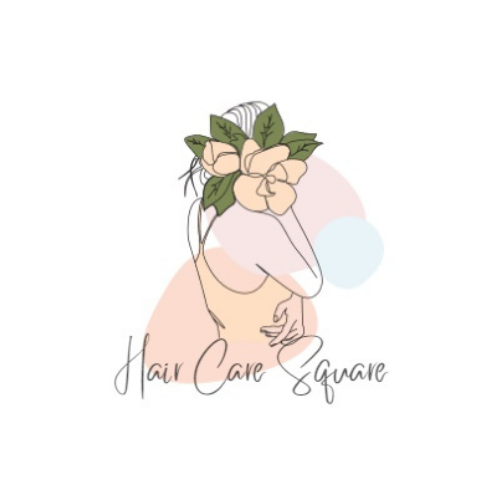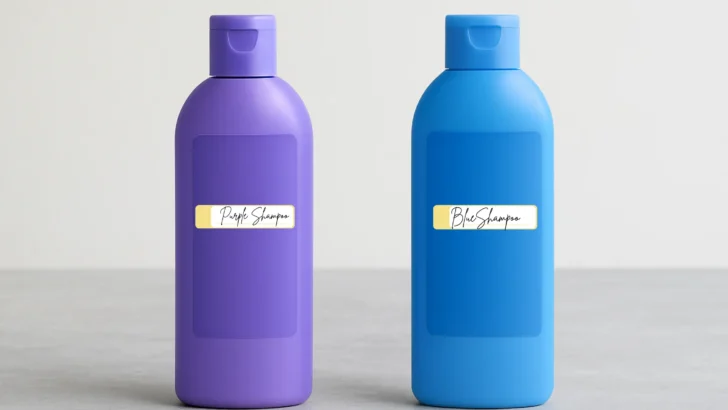When it comes to maintaining salon-worthy hair color at home, color-correcting shampoos have become indispensable. If you’ve ever wandered the hair care aisle wondering whether to grab purple shampoo or blue shampoo, you’re not alone. Both formulas promise to neutralize unwanted tones and enhance your hair’s vibrancy, but understanding their distinct benefits is key to making the right choice for your unique shade.
In this expert guide, we’ll break down everything you need to know about purple vs blue shampoo from what they do, who they’re for, to how to use them for flawless color every day.
What Are Purple And Blue Shampoos?
Purple and blue shampoos are color-depositing shampoos designed to neutralize brassy or unwanted tones in color-treated or naturally light hair. They work on the principle of color theory: colors opposite each other on the color wheel cancel each other out.
- Purple shampoo deposits violet pigments to neutralize yellow and gold undertones.
- Blue shampoo deposits blue pigments to counteract orange and brassy red undertones.
Both shampoos help maintain cool, fresh-looking hair between salon visits, but their ideal usage depends on your hair color and the specific tones you want to combat.
How Do Purple And Blue Shampoos Work Their Spells?
Both shampoos use color theory principles, pigments opposite on the color wheel cancel each other out:
- Yellow (warm) is neutralized by purple (cool)
- Orange/red (warm) is neutralized by blue (cool)
When warm brassiness appears after color treatments, these shampoos deposit cool tones to balance and refresh your hair color naturally. If you want to negate a tone, seek out the hue opposite it on the color wheel and apply toner or shampoo in that specific color. And in case if you mess up your hair color, you can always use a clarifying shampoo to remove your color or lighten it.
Understanding Your Hair Tone
Before you start looking for shampoo, keep in mind that various hair colors have varying undertones.
Warmer orange undertones are more common in darker hair (any shade of brown). When a dark hair is brightened with balayage, highlights, or other techniques, these warm orange tones become more noticeable. These underneath tones might be red in really dark hair.
Naturally, blonde hair can be found with yellow undertones. Those yellow tones become more prominent when blonde hair is brightened or tinted in any way. Usage of heat tools or treatments, even daily, can bring these tones to the forefront.
Because every hair type is somewhat different, there’s no way to accurately evaluate one person’s hair, but these general guidelines remain true.
| Feature | Purple Shampoo | Blue Shampoo |
|---|---|---|
| Neutralizes | Yellow and golden hues | Orange and brassy red tones |
| Best for | Blonde, silver, and gray hair | Brunette hair with warm highlights |
| Color pigment | Violet | Blue |
| Typical usage frequency | 1–3 times per week | 1–2 times per week |
| Benefits | Brightens, prevents yellowing | Controls warmth, reduces orange |
Who Should Use Purple Shampoo?
Purple shampoo is a must-have for anyone with:
- Blonde hair: Whether icy platinum, ash, or golden blonde, purple shampoo neutralizes yellowing caused by sun exposure, chlorine, and product buildup.
- Silver or gray hair: It prevents dullness and yellowing, keeping silver locks luminous and vibrant.
- Lightened or highlighted hair: Enhances brightness and tone without altering the base color.
How it works: Purple is directly opposite yellow on the color wheel, so purple pigments cancel out yellow hues, leaving hair looking cooler and brighter.
- Olaplex No. 4P Blonde Enhancer Toning Shampoo: Loved for its gentle formula and salon-grade results.
- Danliss Sulfate Free Purple Shampoo: Affordable, effective, and widely available.
- Item display volume 250.0 milliliters
Last update on 2025-07-09 / Affiliate links / Images from Amazon Product Advertising API
- Natural ingredients, deep conditioning: The shampoo and hair mask in this...
- Purple hair mask and keratin treatment: The purple hair mask can eliminate...
- Professional deep care and repair: For dry and damaged hair, it provides...
Last update on 2025-07-09 / Affiliate links / Images from Amazon Product Advertising API
Who Should Use Blue Shampoo?
Blue shampoo is best suited for those with:
- Brunette hair with highlights: Especially for warm brunette shades or caramel balayage that can develop orange or brassy tones.
- Dark hair with red undertones: Blue pigment counteracts orange/red tones that can appear faded or harsh.
- Brown to dark hair transitioning to cooler shades: Helps keep warmth at bay for a polished, glossy finish.
How it works: Blue neutralizes orange, the opposite color on the wheel, making it perfect for richer brunettes battling brassiness.
- Matrix Total Results Brass Off Shampoo: Excellent for brunettes looking to neutralize warmth and a powerhouse against orange tones in darker hair.
- Redken Color Extend Brownlights Blue Shampoo: Designed to enhance brown tones and fight brassiness.
- Toning Blue Shampoo: Neutralizes unwanted brassy, orange undertones in dark...
- Multi-Tasking Properties: Professional toning shampoo deposits blue-violet...
- Key Benefits: Nourishing shampoo suitable for both color treated and...
Last update on 2025-07-08 / Affiliate links / Images from Amazon Product Advertising API
- Redken Color Extend Brownlights is a professional blue toning sulfate-free...
- Blue toning shampoo. Formulated with blue pigments to counteract brassy...
- Color-depositing shampoo with pH balanced formula neutralizes unwanted...
Last update on 2025-07-08 / Affiliate links / Images from Amazon Product Advertising API
How To Use Purple Or Blue Shampoo Correctly
- Apply to wet hair after your regular shampoo or as a standalone wash.
- Leave on for 2-5 minutes (depending on pigment strength and your hair’s sensitivity).
- Rinse thoroughly.
- Follow with a nourishing conditioner or hair mask to combat dryness.
- Use once or twice weekly to avoid over-toning or dryness.
Pro tip: Avoid overuse, as too much toning shampoo can cause a muted or ashy look.
Expert Tips To Maximize Results
- Test first: Apply a small amount on a hidden section of hair to avoid unwanted purple or blue stains.
- Customize usage: Adjust leave-in time based on your hair’s brassiness and porosity.
- Moisturize: Purple and blue shampoos can be drying due to pigment concentration, so hydrate regularly.
- Avoid overuse: Using these shampoos too often can create a muted or ashy look, especially on warmer tones.

Frequently Asked Questions (FAQs)
Can I use purple or blue shampoo on natural hair?
Yes! Even if your hair isn’t dyed, these shampoos can help tone down brassiness from sun exposure or hard water.
How often should I use purple or blue shampoo?
Typically 1-3 times a week, depending on how quickly your hair tones shift.
Can these shampoos lighten my hair?
No, they deposit color to neutralize brassiness but don’t bleach or lighten hair.
Can I use purple shampoo on brunette hair?
Purple shampoo can help remove mild yellow tones in brunette hair but won’t neutralize orange or red tones. For those, blue shampoo is better.
Final Verdict: Which One Should You Choose?
Choosing the right shampoo boils down to your hair color and the specific brassiness you want to tackle:
- If your hair tends to yellow or looks dull blonde, silver, or gray, purple shampoo is your best friend,
- If you’re battling orange or brassy red tones in your brunettes or dark hair, blue shampoo will be your go-to,
- Not sure? Some colorists recommend alternating both shampoos if your hair has a mix of tones.
Investing in the right shampoo not only protects your hair color but also saves money by reducing frequent salon visits. So choose wisely!

